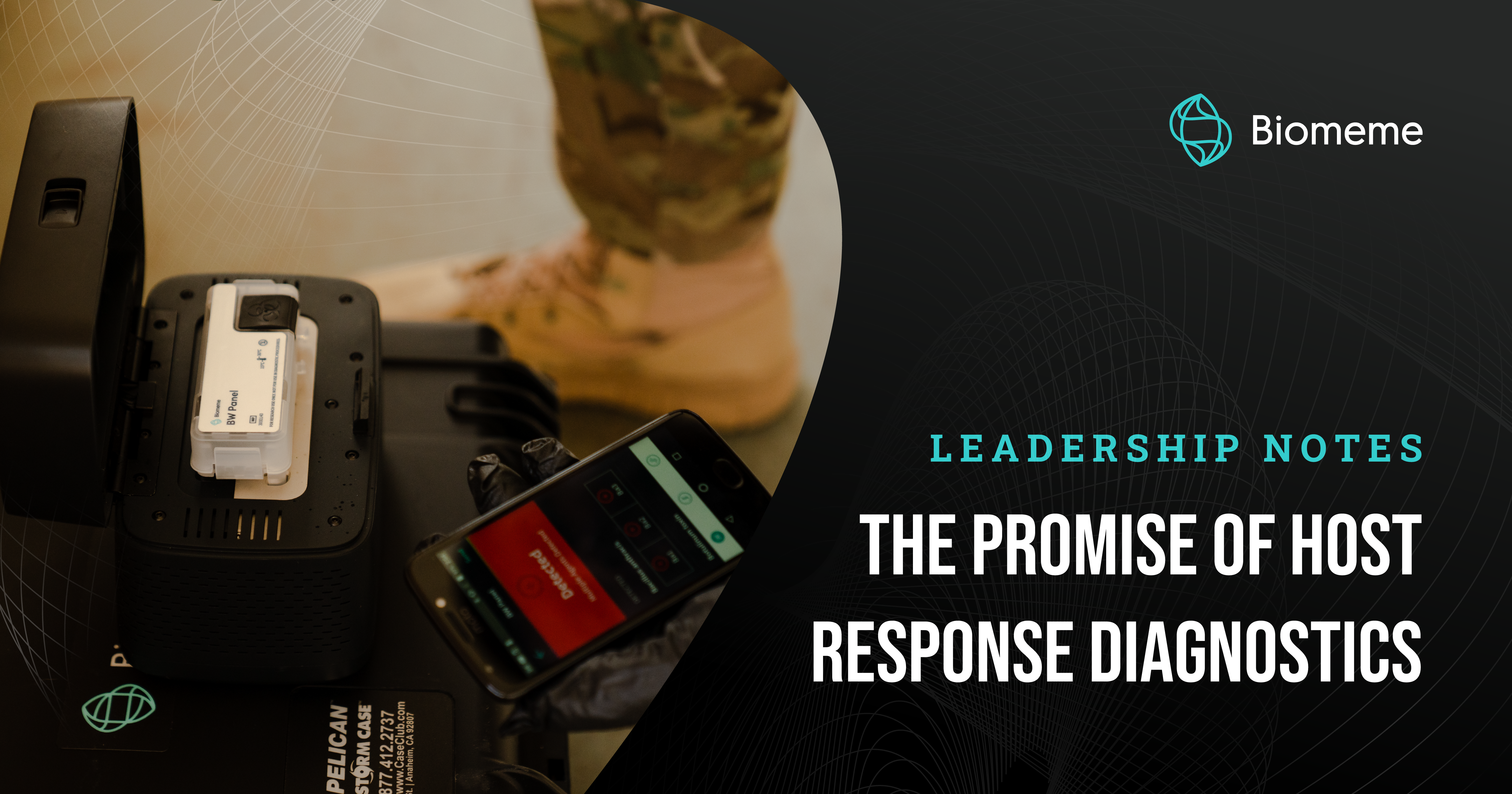Host response refers to the way a body reacts to an injury, illness, or other stressor. It is a critical tool that can be used by health practitioners to quickly derive accurate diagnoses, enabling them to identify and begin the treatment.

Host response, also referred to as host gene response or host immune response, is the way a body—human or animal—reacts to internal and external stressors such as infections, trauma, and illness. The way in which the host has been affected by bacteria or other invasive infection triggers immune responses to combat that stressor. Each host’s response is specific and unique, determined by the host’s genetic composition.
Today, scientists can use these unique expressions to understand whether an invader is bacterial, viral, or parasitic, enabling faster, more accurate diagnoses.

Host response-based diagnostics are a new tool used to identify and monitor infections and other diseases. Unlike traditional diagnostic methods that are designed to detect the presence of a single, specific pathogen, host response diagnostics measure the immune response of the host to the pathogen.
This difference is critical: traditional diagnostics take a hunt-and-peck approach to identify an illness; host response diagnostics operate through a process of elimination. By identifying a host’s response to a set of stressors, entire categories of potential pathogens can quickly be eliminated from consideration, enabling faster diagnoses.
The host response to an infection involves a complex interplay between the innate and adaptive immune systems. When a pathogen enters the body, the innate immune system detects it and mounts a rapid, non-specific response. This response includes the activation of immune cells, such as macrophages and neutrophils, and the release of cytokines and chemokines, which are signaling molecules that help coordinate the immune response.
The adaptive immune system, which includes B cells and T cells, takes longer to respond to an infection but is more specific. B cells produce antibodies that can bind to and neutralize the pathogen, while T cells can directly kill infected cells.
Host response diagnostics measure various components of this immune response to detect the presence of an infection or monitor disease progression. For example, some host response tests measure the levels of cytokines or other immune signaling molecules in blood samples, while others may measure the expression of specific genes associated with the immune response.
By measuring the host response to an infection, these tests can help differentiate between different types of infections and monitor the effectiveness of treatments. Host response diagnostics may also be used to identify individuals who are at risk of developing severe or chronic infections, which can inform treatment decisions and improve patient outcomes.
The immune system acts as the body's defense mechanism against foreign substances, such as viruses, bacteria, and other pathogens, identifying and destroying them while preserving normal cells and tissues. This intricate system orchestrates a specific signature, the host immune response, which is the result of the body's coordinated immunological reactions. Working closely together, the immune response and host response manage external invaders, with the immune system serving as the initial barrier. However, the host's genetically predisposed signature dictates how the immune system responds, shaping the overall host immune response.
When a virus enters a body, it multiplies by latching on to more and more cells. The immune response is to recognize the virus and activate immune cells. These cells also release cytokines and chemokines, anti-inflammatory factors and cell migration inductors, that help coordinate the immune response and attract other immune cells to the site of infection.
Bacterial infection creates an inflammatory response from the host. This engages the immune response to put up defense mechanisms against the bacteria. These immune cells, macrophages and neutrophils, can engulf and kill bacteria. These cells also release cytokines and chemokines that help coordinate the immune response and attract other immune cells to the site of infection.
Parasites create an issue with the host’s tissues and vital organs. Because most invasive stressors are parasitic, the host response to a parasitic infection has evolved to combat the invader at the site of infection, and vice versa.
The host immune response to fungal infections involves the innate immune system's recognition of fungal components, triggering inflammation and attracting immune cells. The adaptive response includes T and B cells, which release cytokines and antibodies to neutralize and eliminate the fungi. In immunocompromised individuals, fungal infections can become severe due to a weakened immune response.

Host response diagnostics will offer clear, data-driven results, faster for both patient and practitioner. Understanding the signatures of the body's immune response enables practitioners to swiftly identify pathogens they are combating. This not only expedites treatment but also addresses the chronic overuse of antibiotics for non-bacterial illnesses, a practice fueling antibiotic resistance.
To support these cutting-edge efforts, Biomeme has developed the Host Response Test (HR-B/V). This test provides reliable, detailed results to distinguish viral or bacterial infections, aiding practitioners in data-driven treatment decisions. By leveraging this diagnostic tool, we aim to:

Biomeme CEO Max Perelman explains why host response testing has the potential to transform global health – starting...
401 North Broad St Suite 222 Philadelphia, PA 19108